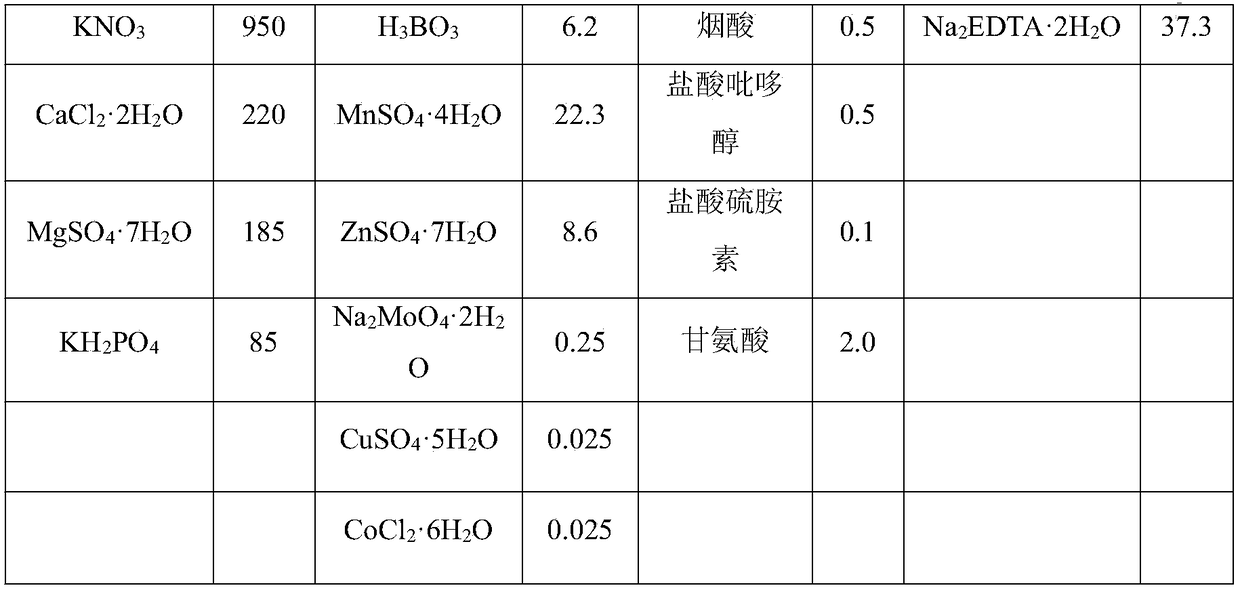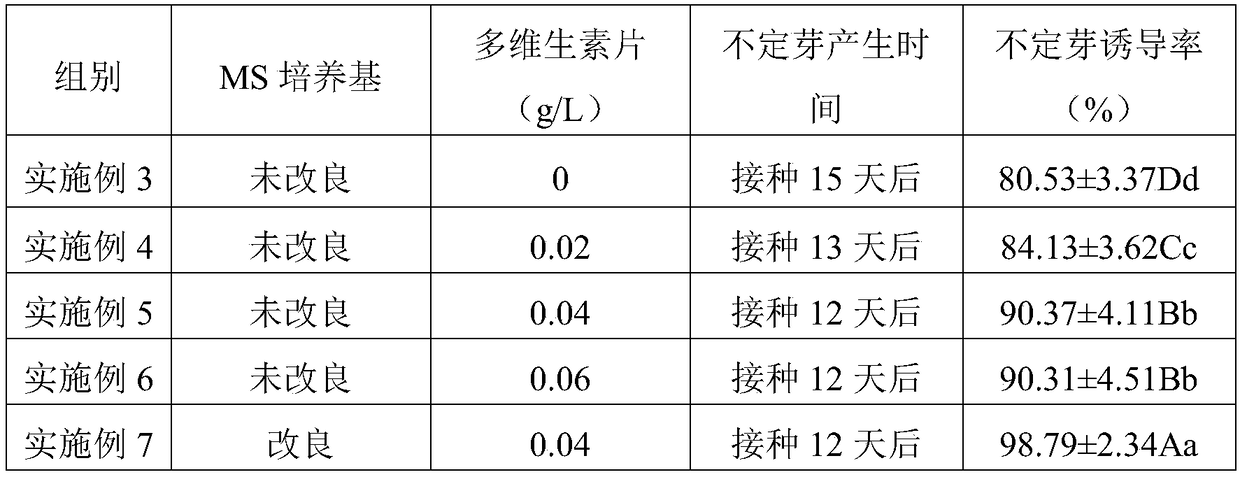Method for cultivating immature capsicum seeds and rapidly propagating seedlings
A technology of immature seeds, which is applied in the field of pepper immature seed cultivation and rapid seedling propagation, can solve the problems of low efficiency, long breeding cycle, and many pepper breeding processes, so as to reduce experimental steps, increase growth speed, and improve The effect of breeding efficiency
- Summary
- Abstract
- Description
- Claims
- Application Information
AI Technical Summary
Problems solved by technology
Method used
Image
Examples
Embodiment 1
[0030] The present invention provides a kind of capsicum immature seed culture and the method for rapidly multiplying seedling, comprise the steps:
[0031] (A) Acquisition of immature seeds: Take the green pepper 6421 fruits 25-30 days after field pollination, put them in a ziplock bag, seal the bag tightly, leave it at room temperature for 3 days, take it out, rinse it under running water, and use 75% alcohol Wipe the peel 2-3 times with a cotton ball. Cut the fruit in half lengthwise with a scalpel, and finally gently remove the immature seeds with tweezers for inoculation.
[0032] (B) Germination culture of immature seeds: Inoculate the immature seeds in the seed germination medium on the ultra-clean workbench and cultivate them until seedlings grow. The formula of the seed germination medium is 1 / 2MS medium (see Table 1)+0.5mg / L gibberellin+20g / L sucrose+6g / L agar powder, and the pH value is 5.8. The culture conditions are as follows: the culture temperature before the...
Embodiment 2
[0045] The immature seeds were inoculated in the seed germination medium on an ultra-clean bench and cultivated until seedlings grew. The medium formula is 0.7g / L ammonium nitrate+1.5g / L potassium nitrate+0.07g / L potassium dihydrogen phosphate+0.5mg / L gibberellin+20g / L sucrose+6g / L agar powder, other operations and conditions are the same as in Example 1. After 7 days of inoculation, it was found that the germination rate of the seeds in Example 2 and Example 1 all reached greater than 95%, indicating that it is feasible to replace the 1 / 2MS culture medium with this inorganic salt, and this method saves the experimental cost and reduces the experimental cost. step.
Embodiment 3
[0047] The capsicum immature seeds were inoculated in the medium supplemented with 0.5g / L streptomycin, and the experiment was not carried out on the ultra-clean bench, and other operations and conditions were the same as in Example 2. After 3 days of inoculation, it was observed that adding low-concentration streptomycin to the culture medium was equivalent to the inoculation effect in the ultra-clean workbench, and the seed contamination rate in Example 3 and Example 2 was less than 1%; after 7 days of inoculation, the seed germination rate was observed It was found that the addition of streptomycin did not affect the germination of the seeds, and the germination rates of the seeds in Example 3 and Example 2 were both greater than 95%, indicating that the method of adding streptomycin can simplify the inoculation process.
PUM
 Login to View More
Login to View More Abstract
Description
Claims
Application Information
 Login to View More
Login to View More - R&D
- Intellectual Property
- Life Sciences
- Materials
- Tech Scout
- Unparalleled Data Quality
- Higher Quality Content
- 60% Fewer Hallucinations
Browse by: Latest US Patents, China's latest patents, Technical Efficacy Thesaurus, Application Domain, Technology Topic, Popular Technical Reports.
© 2025 PatSnap. All rights reserved.Legal|Privacy policy|Modern Slavery Act Transparency Statement|Sitemap|About US| Contact US: help@patsnap.com



